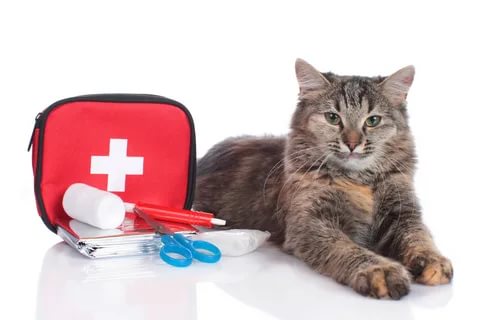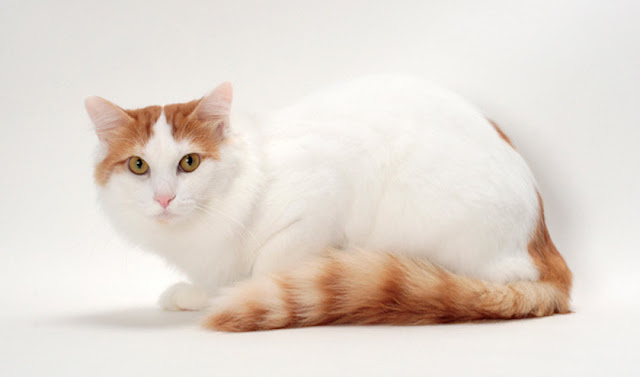Introduction
Nutrition is the cornerstone of a cat's health and quality of life. Choosing the right food at each life stage is not just a luxury—it directly affects growth, immunity, energy levels, and behavior.
Kittens require food rich in nutrients to support bone development, muscle growth, and a healthy nervous system until they reach adulthood. But the key question for every cat owner is: When exactly should you switch from kitten food to adult cat food?
Incorrect timing can lead to health problems:
Switching too early deprives kittens of essential nutrients for proper growth.
Switching too late may result in overweight issues and strain on kidneys or liver due to excess calories.
In this guide, we’ll cover everything you need to know, from the nutritional differences between kitten and adult food to practical step-by-step switching methods and expert advice.
Part 1: Understanding the Differences Between Kitten and Adult Cat Food
- Energy and Calories Kittens: Require nearly twice the calories relative to their weight compared to adult cats due to rapid growth and high activity levels.
Adult cats: Need fewer calories as metabolism slows; excess calories can lead to obesity.
- Protein Kittens: Need 35–50% protein for muscle and tissue development.
Adults: Need 30–40% protein to maintain muscle mass without straining the kidneys.
- Fat Kittens: High fat content provides energy and supports absorption of fat-soluble vitamins (A, D, E, K) and brain development (DHA & ARA).
Adults: Moderate fat for energy without promoting weight gain; essential for skin and coat health.
- Vitamins and Minerals Kittens: High calcium and phosphorus for bone and dental development.
Adults: Balanced minerals for organ function rather than growth.
- Fiber and Moisture Kitten food is softer and easier to digest.
Adult cat food contains more fiber to regulate digestion and reduce hairballs.
Fresh water should always be available.
Why You Shouldn’t Keep Feeding Kitten Food to Adult Cats Kitten food is nutrient-rich to support growth, but adult cats consuming it for too long may experience:
Weight gain and obesity
Joint problems
Kidney and liver strain from excess protein
Reduced activity and lethargy
Adult cat food is formulated to maintain energy balance and overall health without overfeeding.
Ideal Age to Switch General Rule:
Usually around 12 months of age. Growth is complete, and metabolism slows.
Exceptions by Breed: Large breeds (e.g., Maine Coon, Ragdoll) may need kitten food until 15–18 months.
Small breeds (e.g., Siamese, Bengal) may mature by 10–11 months.
Individual Factors: Weight, activity level, and health condition influence the timing.
Post-spaying/neutering, start switching 2–4 weeks after surgery to prevent weight gain.
Signs Your Cat is Ready: Growth has slowed
Body is proportionate and muscular
Appetite stabilizes
Fur and eyes appear healthy
Part 2: How to Switch Gradually Why Gradual Switching is Important Prevents vomiting, diarrhea, loss of appetite, or refusal of food
Allows digestive system to adapt
Reduces stress for the cat
Step-by-Step Transition Plan (7–14 days) Days Ratio (Kitten : Adult) Notes 1–3 75% Kitten + 25% Adult Observe appetite & digestion 4–6 50% Kitten + 50% Adult Adjust based on stool consistency 7–9 25% Kitten + 75% Adult Monitor tolerance 10–14 100% Adult Complete transition
Tips:
Mix foods thoroughly
Keep feeding times consistent
Provide fresh water
Monitor stools and adjust if diarrhea occurs
Reduce adult food if needed and extend transition
Choosing the Right Adult Cat Food Dry food: Convenient, helps clean teeth, but must ensure adequate water intake.
Wet food: High moisture content, prevents urinary problems, but more expensive and perishable.
Mixed feeding: Combines wet and dry meals, offering hydration and dental benefits.
Common Mistakes to Avoid Switching abruptly
Ignoring weight and portion adjustments
Mixing incompatible brands
Over-relying on treats
Ignoring behavioral signs of stress
Expert Tips Look for labels like “Complete and Balanced” or “AAFCO Approved”
Stick to one trusted brand if possible
Observe energy levels, coat quality, and appetite
Consult a veterinarian if any unusual signs appear
How to Know the Transition Was Successful Stable appetite and weight
Normal, firm stools
Healthy, shiny coat
Active but not hyperactive
No vomiting or digestive issues
Part 3: Post-Switch Guidelines & Long-Term Care Veterinary Advice Monitor weight every 2–4 weeks
Keep feeding times and type of food consistent
Limit treats to 10% of daily calories
Include dry food occasionally for dental health
Encourage daily activity and play
Annual checkups for weight, teeth, kidneys, and coat quality
Frequently Asked Questions Can adult cats occasionally eat kitten food?
Yes, but in very small amounts as a treat.
Difference between “adult” and “all life stages” food?
“All life stages” can be fed to any age, but age-specific food is optimal.
Multiple cats of different ages?
Feed separately or use microchip feeders to control diet.
Are supplements necessary?
Usually not if food is balanced; supplements only with vet guidance.
Homemade food?
Possible but requires precise nutritional knowledge.
Do neutered/spayed cats need adjustments?
Yes, lower calories to prevent weight gain.
Signs food isn’t suitable:
Vomiting, diarrhea, dull coat, lethargy, bad breath
Special Considerations Pregnant or nursing adult cats: continue kitten food
Sick or underweight cats: may need kitten food temporarily
Senior cats (7+ years): switch to senior food with lower calories and antioxidants
Maintaining Health Long-Term Stick to a feeding schedule
Provide fresh water
Monitor weight and stool
Offer wet food daily
Clean bowls regularly
Limit treats and carbs
Rotate protein sources occasionally
Gradually switch brands if necessary
Signs of a Healthy Adult Cat Stable weight
Shiny, soft coat
Clear eyes
Regular activity
Firm, consistent stools
No bad odor or digestive issues
Common Post-Switch Mistakes Using the same protein source for years
Relying on cheap, low-quality food
Leaving food out all day
Giving milk after kittenhood
Ignoring sudden appetite changes
Mental Wellbeing Nutrition works best with mental stability:
Provide safe resting places
Allocate daily playtime
Avoid sudden changes in feeding or litter location
Respect privacy while eating
Lifelong Nutrition Overview Stage Age Recommended Food Purpose Birth–8 weeks Nursing Mother’s milk or kitten formula Immunity & early growth 2–12 months Kitten High-protein, high-energy Rapid growth & muscle development 1–7 years Adult Balanced adult food Maintain weight & organ health 7+ years Senior Low-fat, high-fiber, antioxidants Support kidneys, joints, immunity
Conclusion Switching from kitten to adult cat food is more than changing meals—it’s a transition in life stage. Understanding your cat’s nutritional needs, observing behavior, and consulting veterinarians when needed ensures a healthy, long, and happy life.
Key takeaways:
Start switching around 12 months
Transition gradually over 1–2 weeks
Monitor weight, appetite, and coat
Consult your vet for any unusual signs
Maintain a consistent, balanced diet throughout life
Proper nutrition combined with love, care, and mental well-being guarantees that your cat thrives through adulthood and beyond.


.jpg)




Post a Comment